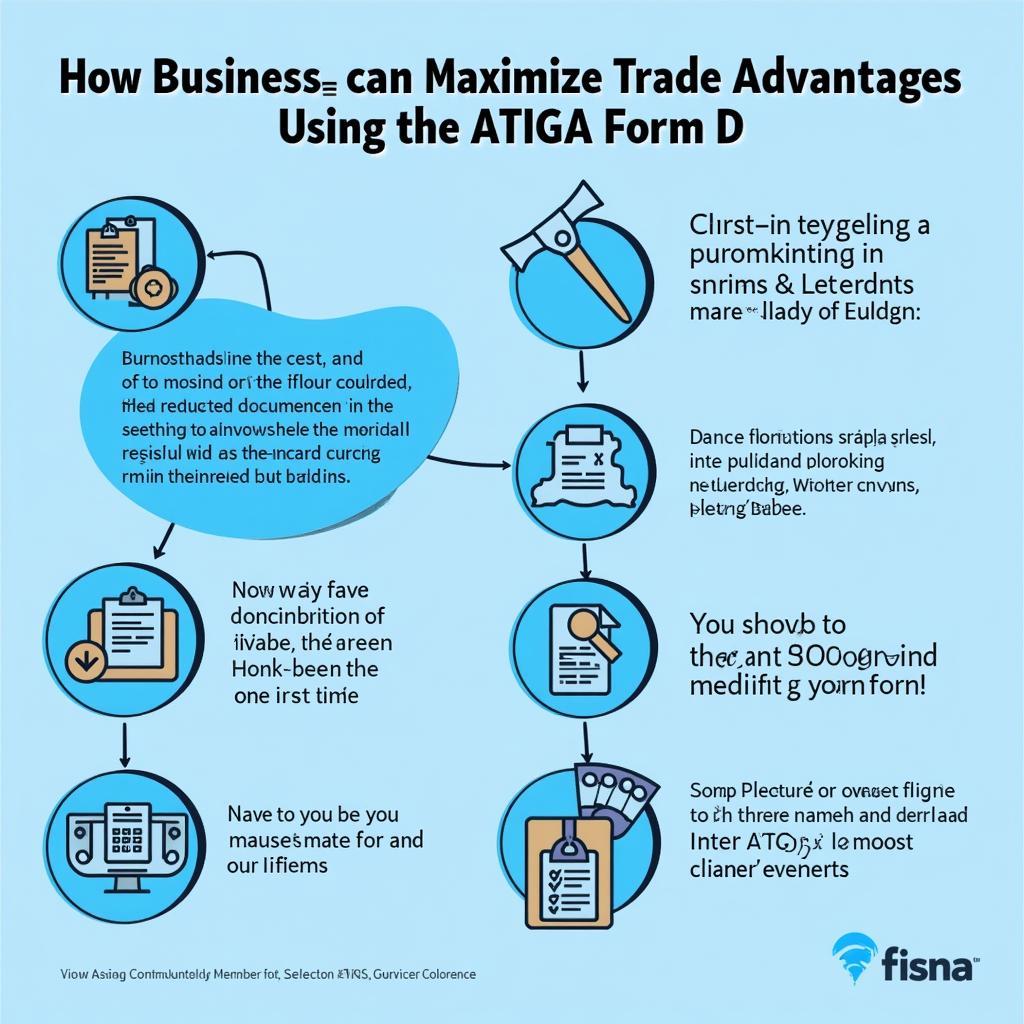The Asean Atiga Form D is a crucial document for businesses engaging in trade within the ASEAN region. It certifies the origin of goods and allows importers to benefit from preferential tariff rates under the ASEAN Trade in Goods Agreement (ATIGA). This article delves into the specifics of the Form D, its importance, and how businesses can utilize it to maximize trade advantages within the ASEAN economic community. After reading this, you will have a comprehensive understanding of the ASEAN ATIGA Form D and its role in facilitating seamless trade.
What is the ASEAN ATIGA Form D?
The ASEAN ATIGA Form D is a certificate of origin (COO) used to determine if goods qualify for preferential tariff treatment under the ATIGA. It is a self-declaration made by the exporter and certified by an issuing authority designated by each ASEAN member state. The form serves as proof that the goods originate from an ASEAN country, thus enabling them to benefit from reduced or eliminated tariffs. The Form D plays a significant role in promoting regional integration and boosting intra-ASEAN trade. For more information on the countries involved, check out ASEAN ATIGA country.
The Form D is essential for businesses looking to leverage the benefits of the ATIGA, which aims to create a single market and production base within the ASEAN region. By simplifying customs procedures and reducing trade barriers, the ATIGA promotes regional economic integration and encourages the free flow of goods.
Importance of the ASEAN ATIGA Form D
Utilizing the Form D correctly can significantly reduce import costs, making ASEAN-originating goods more competitive in the regional market. This price advantage can boost sales and profitability for businesses engaged in intra-ASEAN trade. It’s a key component for businesses to consider when planning their import and export strategies within the ASEAN region. The Form D also contributes to transparency and accountability in cross-border trade, ensuring that preferential tariffs are applied only to goods that genuinely originate within ASEAN.
 Sample ASEAN ATIGA Form D
Sample ASEAN ATIGA Form D
How to Obtain and Complete the ASEAN ATIGA Form D
The procedures for obtaining and completing the ASEAN ATIGA Form D generally involve applying to the designated issuing authority in the exporting country. This authority is typically a government agency responsible for trade or customs matters. Exporters need to provide supporting documentation that proves the origin of the goods, such as manufacturing records, bills of materials, and other relevant certificates. It’s vital to ensure the accuracy and completeness of the information provided on the form to avoid delays or rejection by customs authorities.
Common Mistakes to Avoid
Common mistakes when completing the Form D include inaccurate product descriptions, incorrect origin criteria, and missing or incomplete information. These errors can lead to delays in customs clearance, penalties, or even the denial of preferential tariff treatment. Therefore, it is crucial for businesses to carefully review the form’s instructions and seek guidance from relevant authorities when necessary. Understanding the ASE custom filing process can also help avoid potential issues.
 Common Errors When Completing the ASEAN ATIGA Form D
Common Errors When Completing the ASEAN ATIGA Form D
Benefits of Using the ASEAN ATIGA Form D
The primary benefit of using the ASEAN ATIGA Form D is the substantial cost savings achieved through preferential tariff rates. This can significantly improve the competitiveness of ASEAN-made products within the region. Furthermore, the simplified customs procedures associated with the Form D contribute to faster clearance times, reducing lead times and facilitating smoother trade operations. For businesses operating within the ASEAN region, utilizing the Form D is a strategic move to optimize trade efficiency and enhance profitability. You can learn more about related agreements in the ASEAN 2017 agreements.
Maximizing Trade Advantages with the ASEAN ATIGA Form D
To maximize the trade advantages offered by the Form D, businesses should ensure they fully understand the rules of origin criteria and comply with all the necessary documentation requirements. Staying updated on any changes or updates to the ATIGA and its implementing regulations is also essential. By proactively managing their Form D procedures, businesses can streamline their trade operations and fully capitalize on the opportunities presented by the ASEAN economic community. Tools like ASE calculators orca might also be helpful in this regard.
 Maximizing Trade Advantages with the ATIGA Form D
Maximizing Trade Advantages with the ATIGA Form D
Conclusion
The ASEAN ATIGA Form D is a vital instrument for businesses seeking to harness the full potential of the ASEAN Trade in Goods Agreement. By understanding the requirements and procedures related to the Form D, companies can significantly reduce import costs, improve their competitiveness, and streamline their trade operations within the ASEAN market. Accurate and efficient utilization of the ASEAN ATIGA Form D is a key strategy for success in the dynamic and rapidly growing ASEAN economic landscape.
FAQ
- What is the validity period of an ASEAN ATIGA Form D?
- Can the Form D be issued retrospectively?
- What happens if there are errors on the Form D?
- Where can I obtain more information about the ATIGA?
- Who can issue the ASEAN ATIGA Form D?
- What are the specific product requirements for using the Form D?
- How does the ATIGA Form D differ from other certificates of origin?
Common Scenarios and Questions
- Scenario: My shipment was delayed because of an error on the Form D. What should I do?
- Question: Can I amend a Form D after it has been issued?
Further Resources
For more information, please explore our articles on ASE test m1.
For assistance, please contact us at Phone Number: 0369020373, Email: [email protected], or visit us at Thôn Ngọc Liễn, Hiệp Hòa, Bắc Giang, Việt Nam. We have a 24/7 customer support team.

